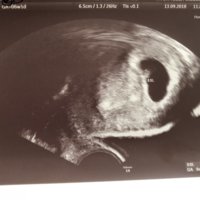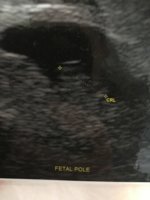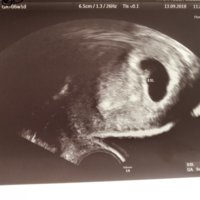You are using an out of date browser. It may not display this or other websites correctly.
You should upgrade or use an alternative browser.
You should upgrade or use an alternative browser.
Does anyone know about the placenta position predicting gender?
- Thread starter Charlene_b_x
- Start date
katrus78
Mommy of 3
- Joined
- Jun 11, 2011
- Messages
- 1,653
- Reaction score
- 0
Thank you sweety. I was just really hoping for a girl, at least one girl... Already have a son, so it would crash me to have two more... I was also hoping they are on the left looking from the cervix up, but I guess I was wrong.
I think I will just wait two more weeks, and hopefully get a different u/s tech who will tell me for sure, as this one today was not very helpful at all. I hope 8w4d is not going to be too late to try to use this theory again.
I think I will just wait two more weeks, and hopefully get a different u/s tech who will tell me for sure, as this one today was not very helpful at all. I hope 8w4d is not going to be too late to try to use this theory again.
Affyash
My eggo is preggo!
- Joined
- May 16, 2011
- Messages
- 1,129
- Reaction score
- 0
Thank you sweety. I was just really hoping for a girl, at least one girl... Already have a son, so it would crash me to have two more... I was also hoping they are on the left looking from the cervix up, but I guess I was wrong.
I think I will just wait two more weeks, and hopefully get a different u/s tech who will tell me for sure, as this one today was not very helpful at all. I hope 8w4d is not going to be too late to try to use this theory again.
I feel you I really really do. I have a son already also. Supposedly this one is a girl for me but I'm holding my breath for a second u/s on the 15th I'm too skeptical to believe it yet! But you never know which side is your left or right in that picture. 8 weeks 4 days shouldn't be too late for this theory. When u go next time have the tech confirm where your head/cervix would be in the pic and which side is your left/right. I'll totally help you again then! Don't give up yet! Plus boys love their mommies so much and from what I hear girls are pains in the asses anyway!

MissMichelle
Well-Known Member
- Joined
- Dec 4, 2011
- Messages
- 281
- Reaction score
- 0
Hey Ladies, could somebody please help me? I've been trying for a little less than a week in first tri with this lol..
Im trying to find out which side my placenta is on but im having trouble, maybe someone can help me?
This one is from my 7 week scan..
https://img.photobucket.com/albums/v254/eternal_lust/003-1.jpg
And this one is from my 9 week scan..
https://img.photobucket.com/albums/v254/eternal_lust/009-1.jpg
Both scans are abdominal. Thanks in advance!
Im trying to find out which side my placenta is on but im having trouble, maybe someone can help me?
This one is from my 7 week scan..
https://img.photobucket.com/albums/v254/eternal_lust/003-1.jpg
And this one is from my 9 week scan..
https://img.photobucket.com/albums/v254/eternal_lust/009-1.jpg
Both scans are abdominal. Thanks in advance!
Hello dear,can you please look at my scan at 6w4dIts not the placenta location, but the DR of where the placenta is forming ,"We can see what is called "decidual reaction" on a 2D B&W scan - since the denser the tissue or matter, the brighter white the are will be". And you have to know the cervical position to be able to discern R from L. It is only accurate from 6-8 weeks as after the placenta is formed it moves (hence anterior/posterior). Most women do not know how to read the scan accurately to determine where the DR is, but in 1st tri we tested the theory and it was accurate for every person who could clearly make it out. Even ME! So, yes you can tell the gender at 6-8 weeks! I attached my pic as an example. Oh, and I should note, its L for girl if u/s was transvaginal. Abdominal u/s is a mirror image and will be opposite.
More Info:
"This is a multi-center prospective cohort study of 5376 pregnant women that underwent ultrasonography from 1997 to 2007. Trans-vaginal sonograms were performed in 22% of the patients at 6 weeks gestation, and Trans-abdominal sonograms were used at 18-20 weeks gestation, at this time the fetal gender were confirmed in 98-99%. The fetal sex was confirmed 100% after delivery. The study also addressed the bicornuate uteri with single pregnancy in relation to placenta / chorionic villi location. The result was tabulated according to gender and placenta / chorionic villi location. Bicornuate uteri with single fetus in different horns were studied and tabulated
Result
Dramatic differences were detected in chorionic villi / placental location according to gender. 97.2% of the male fetuses had a chorionic villi/placenta location on the right side of the uterus whereas, 2.4% had a chorionic villi/placenta location to the left of the uterus. On the other hand 97.5% of female fetuses had a chorionic villi/placenta location to the left of the uterus whereas, 2.7% had their chorionic villi/placenta location to the right side of the uterus. 127 cases were found to involve bicornuate uteri with single foetuses, most male fetuses were located in the right horn of the uterus and showed right placental laterality (70%). Most female fetuses 59% on the other hand, were located in the left horn and showed left laterality (59%).Moreover, most of the males located in the left horn exhibited right laterality (89%). Also most females located in right horn exhibited left laterality (976.4%). In addition this research indicated that there was a possible link between renal pyelectasis and placental location, and it might be used as a genetic soft marker.
Conclusion
Ramzis method is using placenta /chorionic villi location as a marker for fetal gender detection at 6 weeks gestation was found to be highly reliable. This method correctly predicts the fetus gender in 97.2% of males and 97.5% of females early in the first trimester. And it might be helpful to use as a genetic soft marker in relation with fetal pyelectasis.
In simple terms-
*placenta located on right- 97.2% chance it is a boy
*placenta located on left- 97.5% chance it is a girl
*in a bicornate uterus- 70% males implanted on right with right placental laterality; 59% implanted on left were female with left laterality
*those males that implanted on the left- exhibited right laterality 89% of the time.
*those females that implanted on the right exhibited left laterality of the time.
https://www.obgyn.net/ultrasound/ultr...ental_location

- Joined
- Sep 20, 2013
- Messages
- 264
- Reaction score
- 36
This is so interesting! Can you tell by my 6week 2 day internal scan? Il see if I can attach it! Ta!Its not the placenta location, but the DR of where the placenta is forming ,"We can see what is called "decidual reaction" on a 2D B&W scan - since the denser the tissue or matter, the brighter white the are will be". And you have to know the cervical position to be able to discern R from L. It is only accurate from 6-8 weeks as after the placenta is formed it moves (hence anterior/posterior). Most women do not know how to read the scan accurately to determine where the DR is, but in 1st tri we tested the theory and it was accurate for every person who could clearly make it out. Even ME! So, yes you can tell the gender at 6-8 weeks! I attached my pic as an example. Oh, and I should note, its L for girl if u/s was transvaginal. Abdominal u/s is a mirror image and will be opposite.
More Info:
"This is a multi-center prospective cohort study of 5376 pregnant women that underwent ultrasonography from 1997 to 2007. Trans-vaginal sonograms were performed in 22% of the patients at 6 weeks gestation, and Trans-abdominal sonograms were used at 18-20 weeks gestation, at this time the fetal gender were confirmed in 98-99%. The fetal sex was confirmed 100% after delivery. The study also addressed the bicornuate uteri with single pregnancy in relation to placenta / chorionic villi location. The result was tabulated according to gender and placenta / chorionic villi location. Bicornuate uteri with single fetus in different horns were studied and tabulated
Result
Dramatic differences were detected in chorionic villi / placental location according to gender. 97.2% of the male fetuses had a chorionic villi/placenta location on the right side of the uterus whereas, 2.4% had a chorionic villi/placenta location to the left of the uterus. On the other hand 97.5% of female fetuses had a chorionic villi/placenta location to the left of the uterus whereas, 2.7% had their chorionic villi/placenta location to the right side of the uterus. 127 cases were found to involve bicornuate uteri with single foetuses, most male fetuses were located in the right horn of the uterus and showed right placental laterality (70%). Most female fetuses 59% on the other hand, were located in the left horn and showed left laterality (59%).Moreover, most of the males located in the left horn exhibited right laterality (89%). Also most females located in right horn exhibited left laterality (976.4%). In addition this research indicated that there was a possible link between renal pyelectasis and placental location, and it might be used as a genetic soft marker.
Conclusion
Ramzis method is using placenta /chorionic villi location as a marker for fetal gender detection at 6 weeks gestation was found to be highly reliable. This method correctly predicts the fetus gender in 97.2% of males and 97.5% of females early in the first trimester. And it might be helpful to use as a genetic soft marker in relation with fetal pyelectasis.
In simple terms-
*placenta located on right- 97.2% chance it is a boy
*placenta located on left- 97.5% chance it is a girl
*in a bicornate uterus- 70% males implanted on right with right placental laterality; 59% implanted on left were female with left laterality
*those males that implanted on the left- exhibited right laterality 89% of the time.
*those females that implanted on the right exhibited left laterality of the time.
https://www.obgyn.net/ultrasound/ultr...ental_location

Similar threads
- Replies
- 1
- Views
- 3K
- Replies
- 4
- Views
- 4K
- Replies
- 26
- Views
- 9K
Users who are viewing this thread
Total: 1 (members: 0, guests: 1)
Latest posts
-
-
-
-
-
General chatter while we wait (and commentary on the "pull out method") (1 Viewer)
- Latest: DobbyForever




